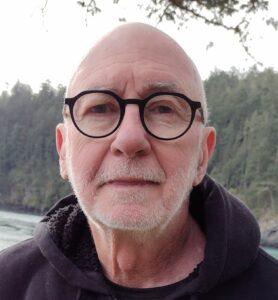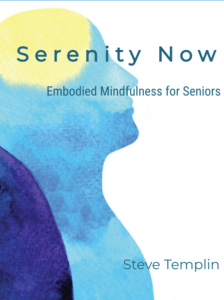Ideally we wake up full of vim and vigor, eager to enthusiastically meet the day. That ideal may be a reach. Waking up feeling some degree of anxiety is probably closer to the norm.
We’ll explore this issue and see what we can do about it from a self-regulation and nervous system perspective. Self-regulation skills are based on how we use awareness of bodily felt experience to inhibit the stress response and rebalance our brain and nervous system for greater health and well-being.
We can reframe the experience of anxiety from an emotional state to a neurological one. This can be helpful because we can learn to be adept at shifting our neurological state by practicing self-regulation skills.
We may wake up feeling anxious because we don’t sleep well. When we’re sensitive we have more emotional experience to process during the day and what’s not fully processed can disrupt the autonomic nervous system (ANS) and interfere with a good night’s sleep.
In that case, practicing self-regulation skills during the day can reduce what needs to be processed during sleep and dreams. Acknowledging feelings during the day (that we might tend to habitually ignore) can be very helpful since ignored emotional energy heightens the vigilance or stress response aspect of the ANS.
For example, if you’re triggered emotionally you may want to take five or ten seconds to simply notice how that feels in your body. And then take a slow breath, or maybe you’ll yawn or sign.
That ten seconds can signal safety to your psyche and nervous system rather than the potential for threat that ignored feelings generate. Interrupting an old ingrained response to emotional experience can be a serious brain reprogramming boost resulting in greater ease. More ease during the day can translate into improved restorative sleep and a better chance of waking up in a better mood.
Anxiety Reframed as Emotional Energy
Here’s an energetic perspective on anxiety. It’s a flow of emotional energy that’s too strong for our comfort level. It may be that the energy (felt experience) has been ignored, judged, or blocked and as a result, it’s become compressed or pressurized. It’s just too much.
Then, when our defenses are lowered, like when we’re sleeping, we can wake up to ‘more’ than we’re accustomed to safely feeling. And that can range from us feeling mildly anxious to a full-blown panic attack.
From this point of view, there are things we can do to decompress or ease the internal pressure that would be a form of preventive medicine. I’ll talk about this first.
During the day I can connect with the feeling terrain (bodily sensations) in brief bouts to show my system that it’s safe for me to feel, as I mentioned earlier. This will help me to create new neural circuits over time that allow me to experience more feelings, more emotional energy more safely. We might think of this as a neurological shift that allows more prefrontal activity and less activation of the amygdala. This shift allows the emotional energy to depressurize, leaving us with less fuel for anxiety.
Here are a few things you can do, ideally frequently and briefly, throughout the day. These suggestions will make more sense if the concepts about anxiety that I’ve shared above resonate with you. All of these suggestions will also support the new neural circuitry concept.
Get into the habit of just checking in with yourself briefly. Maybe on the hour ask yourself how you’re feeling. You might be concerned about an upcoming dentist visit. Notice how that makes you feel. Just feel the sensations and take a nice breath. That’s it.
You could also name the feeling. Notice the feeling and find a word or two that fits. If you decided to spend more time with the feeling, newer, better-fitting words may reveal themselves. Better fit equals more alpha waves. And take a good sigh breath. This process is a form of Somatic Focusing.
You could also say something akin to, “Something in me is feeling (sad, angry, etc.) ….. Or “I’m aware of feeling (sad, angry, etc.) …. Or a part of me is feeling (……) . This is a top down way to create some perspective by being less identified with feelings. It also strengthens the circuitry that supports your sense of Self. Breathe.
Any time you feel emotionally triggered you can immediately pause and do any of the above. Just ten seconds will be a helpful way to reframe your experience.
Practicing the Quick Coherence technique at brief intervals is very helpful for revamping neural circuitry. One minute at a time is good at intervals during the day. Notice your heart, breathe slowly, and think of something that you enjoy. Done.
Finally, you could do some expressive writing. Just write for a few minutes about how you feel. It’s as if you’re showing your inner emotional landscape that you welcome a connection. I find this very helpful. And as I’ve mentioned in earlier posts there are three decades of research confirming that expressive writing helps to balance the ANS.
When the anxiety is more acute here are a few things to try. Any of the above options. if you can do them comfortably and if they give you some relief that’s good. Sometimes noticing feelings is just too much for us and that’s the time to do something else.
Movement. Move, walk, run …. (or imagine any of that). Much anxiety is a form of sympathetic arousal that gives us the chemical energy for running away or fighting … so physical movement can be a way to mobilize and use up some of that chemistry.
Touch. Friendly touch may offer relief … and safety that quiets the nervous system. You could put a hand on your forehead and one on your heart (or wherever you feel anxious) and take a few sigh breaths. You could also gently hug yourself, or gently stroke down from your shoulders to your hands while you’re feeling what you feel and you’re doing the slow breathing. See what works best.
One more thing. Magnesium. It’s a natural beta blocker that most folks are deficient in and some supplementation can be very helpful. I take 300-400 mg. before bed to support restful sleep and a better mood.


 Steve is a retired Doctor of Oriental Medicine, Acupuncture Physician, and HeartMath Trauma-Sensitive Certified Practitioner with over 35 years of clinical experience in the fields of Energy Medicine, Energy Psychology, and Biofeedback.
Steve is a retired Doctor of Oriental Medicine, Acupuncture Physician, and HeartMath Trauma-Sensitive Certified Practitioner with over 35 years of clinical experience in the fields of Energy Medicine, Energy Psychology, and Biofeedback. 